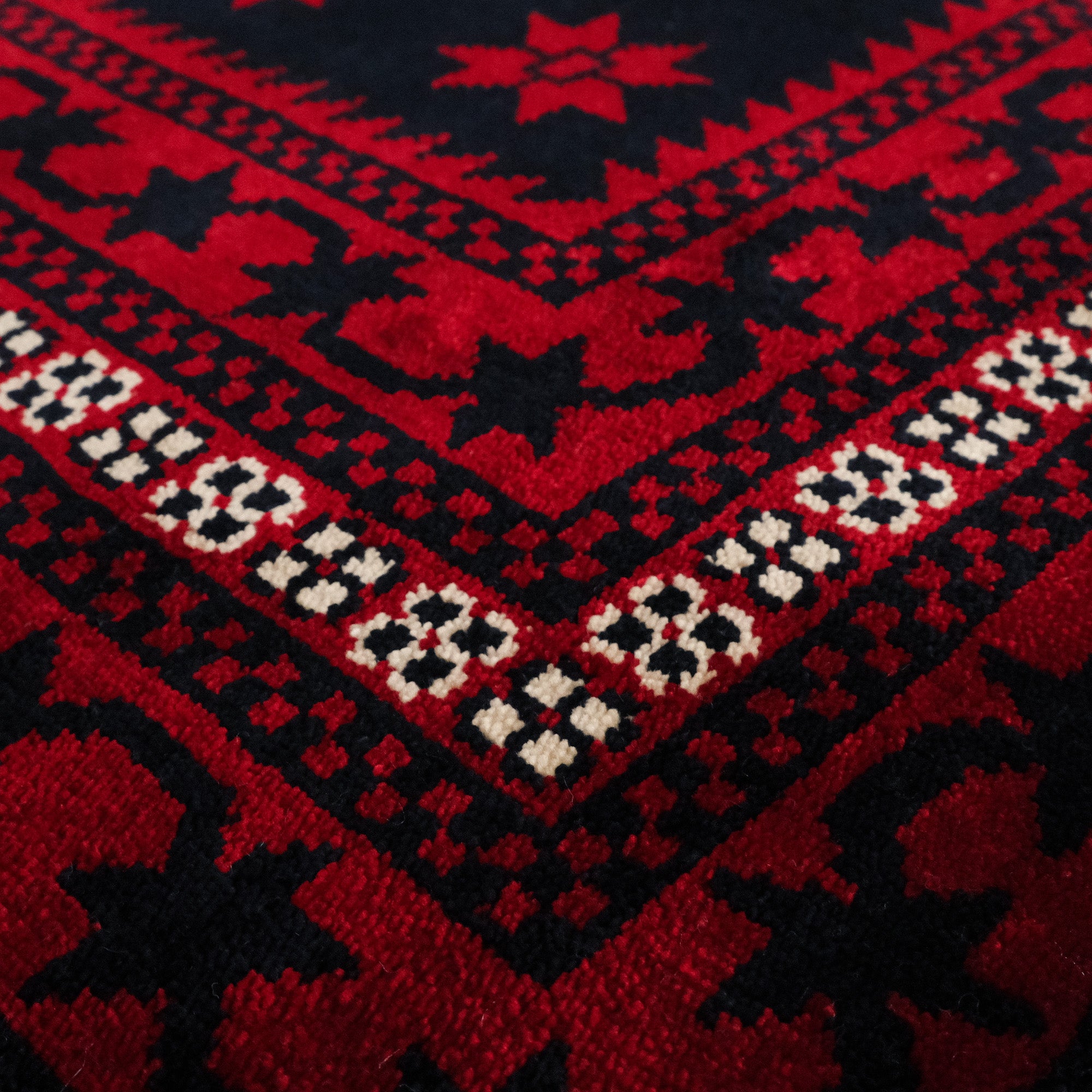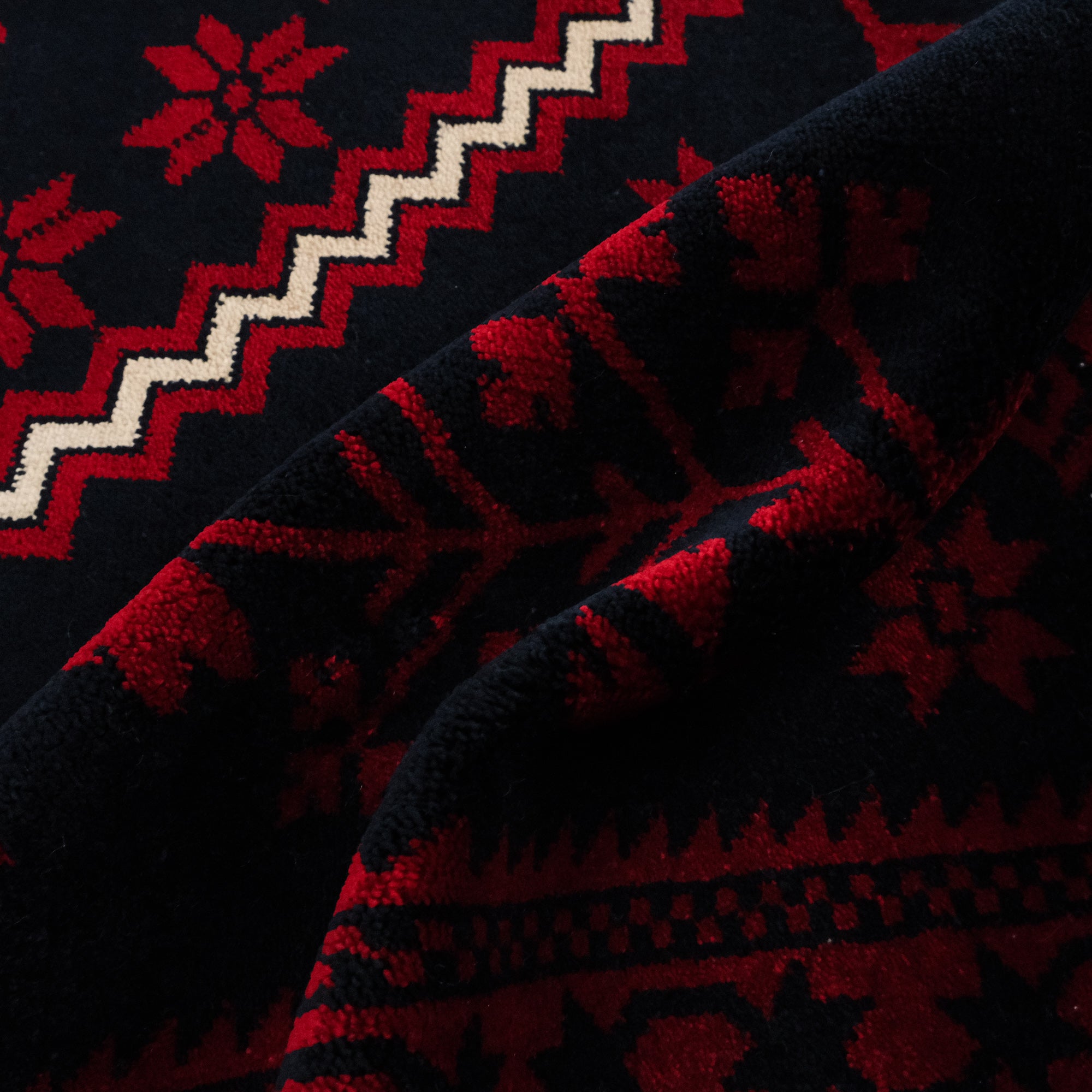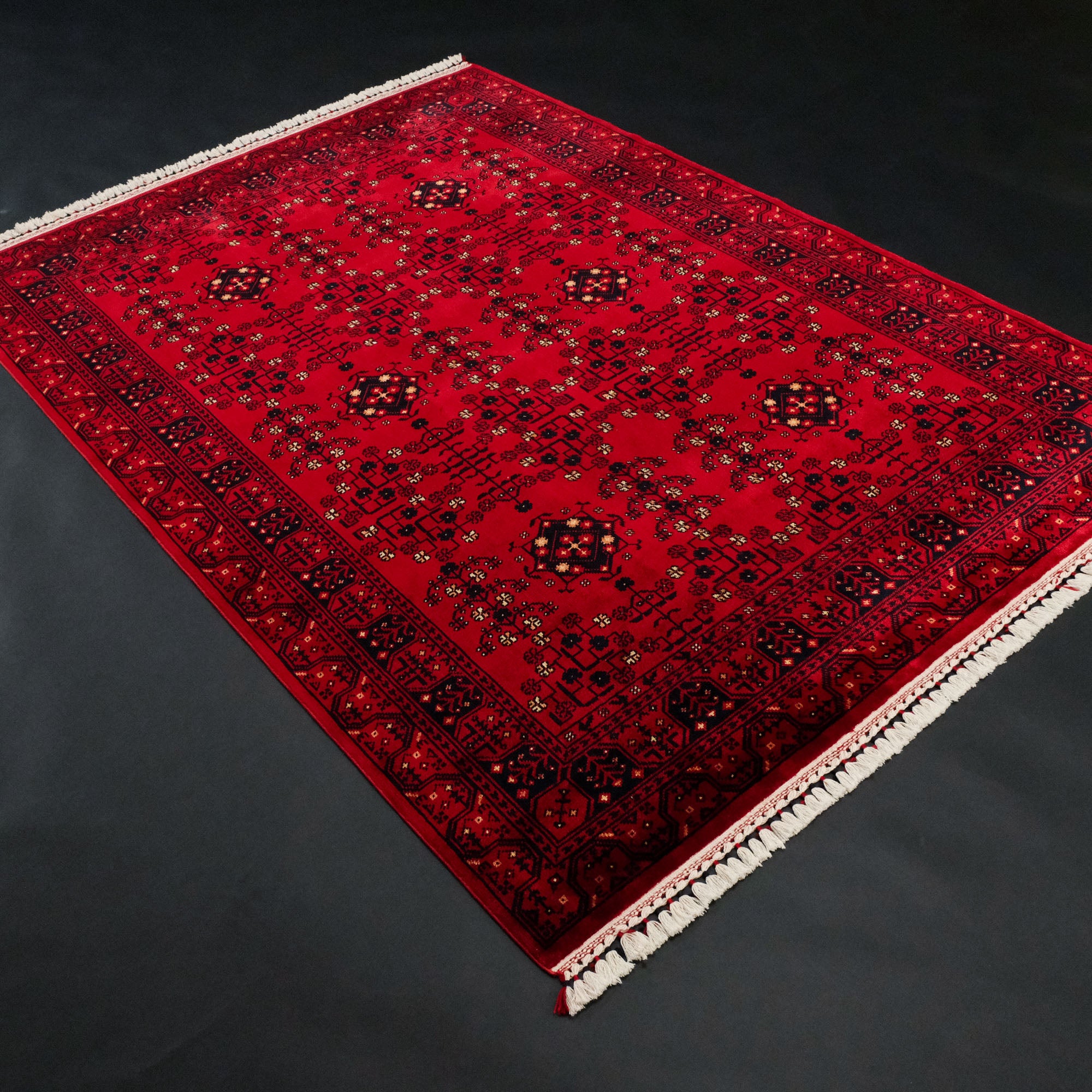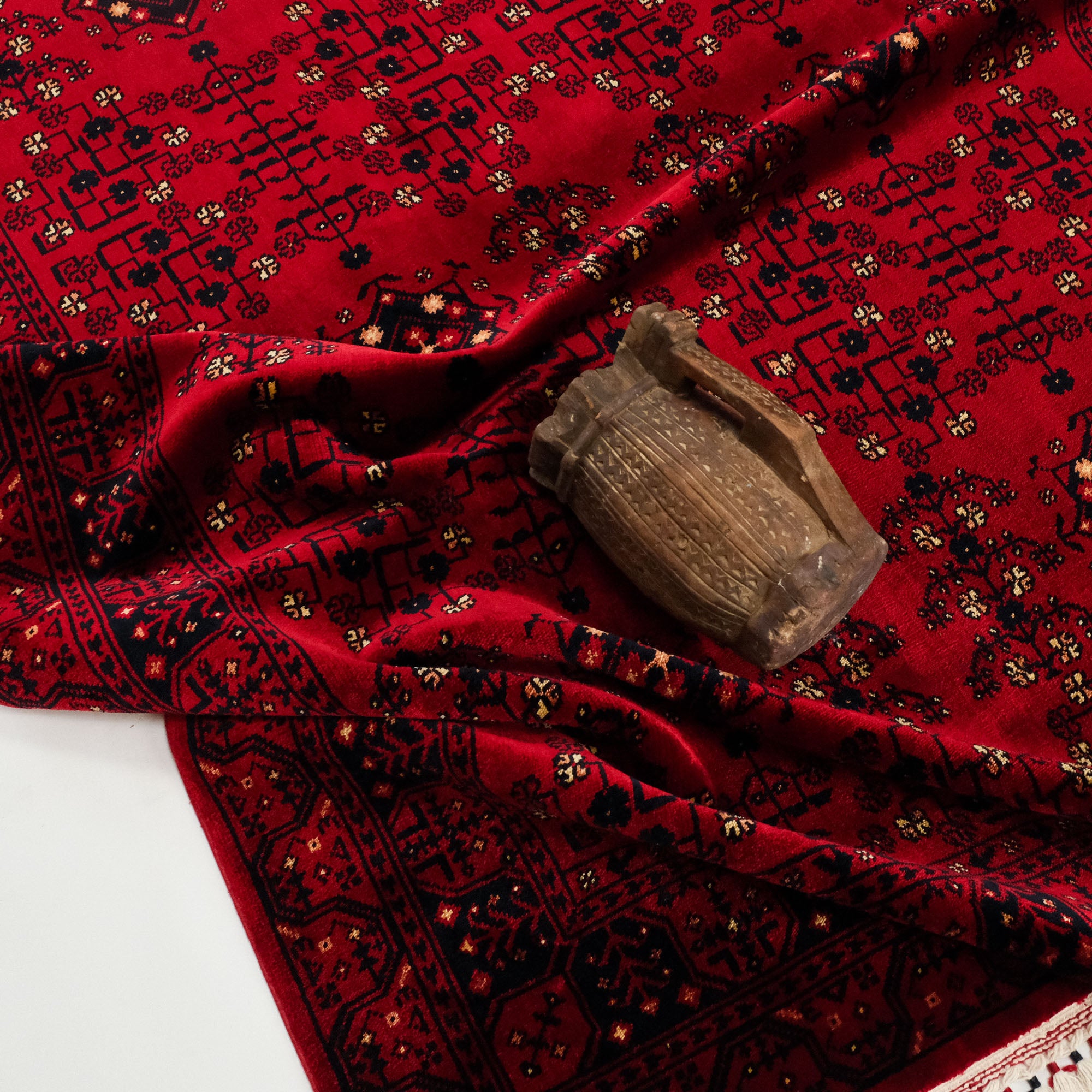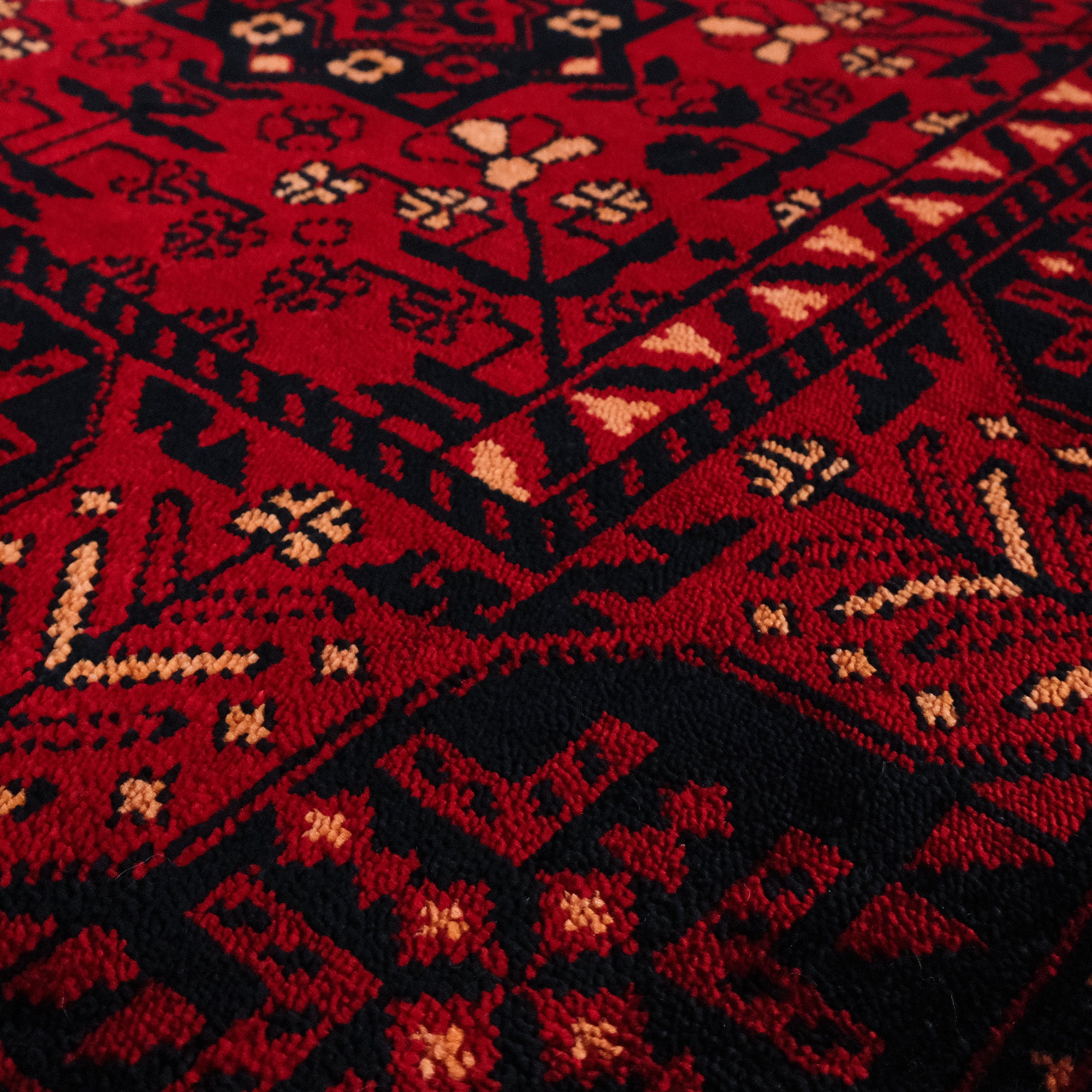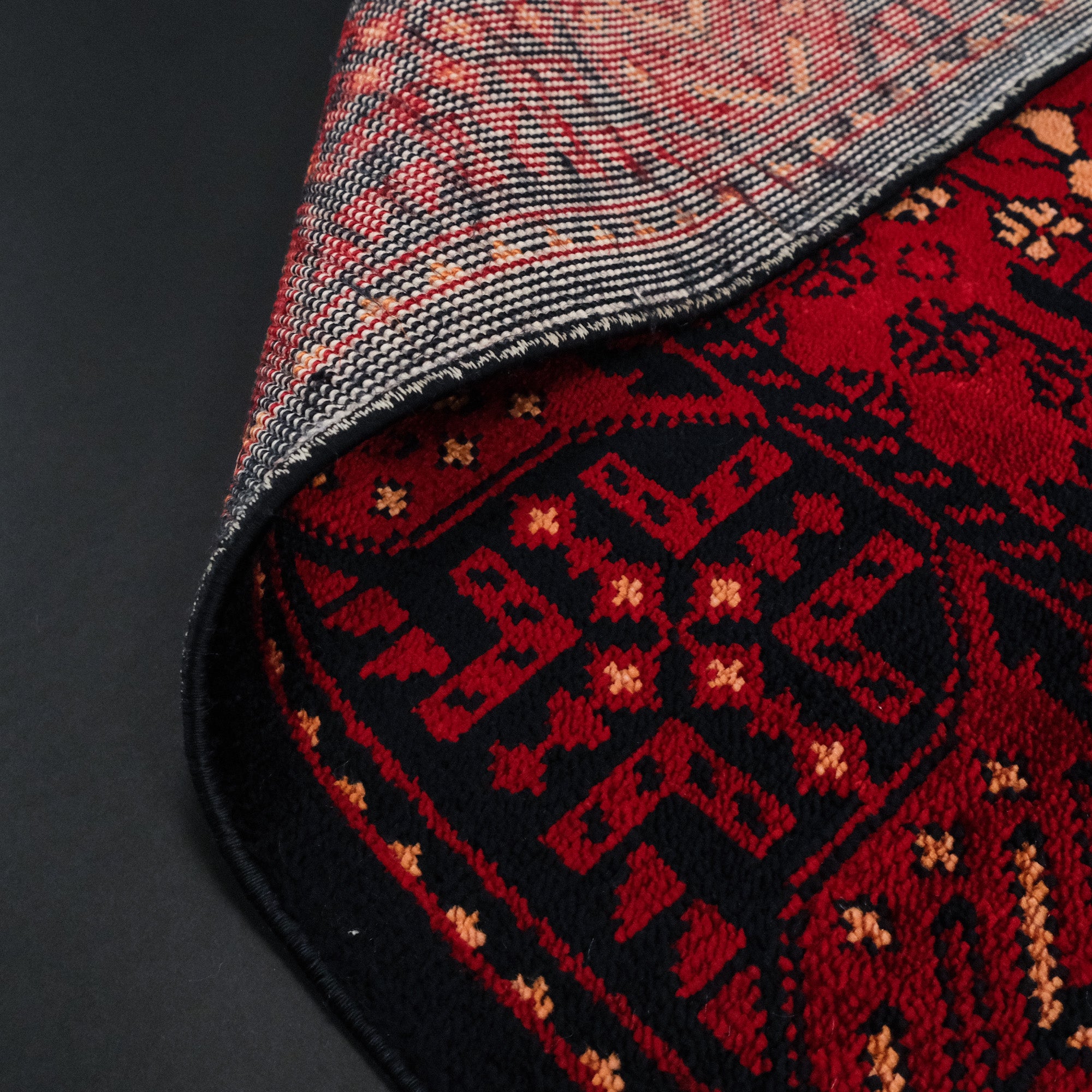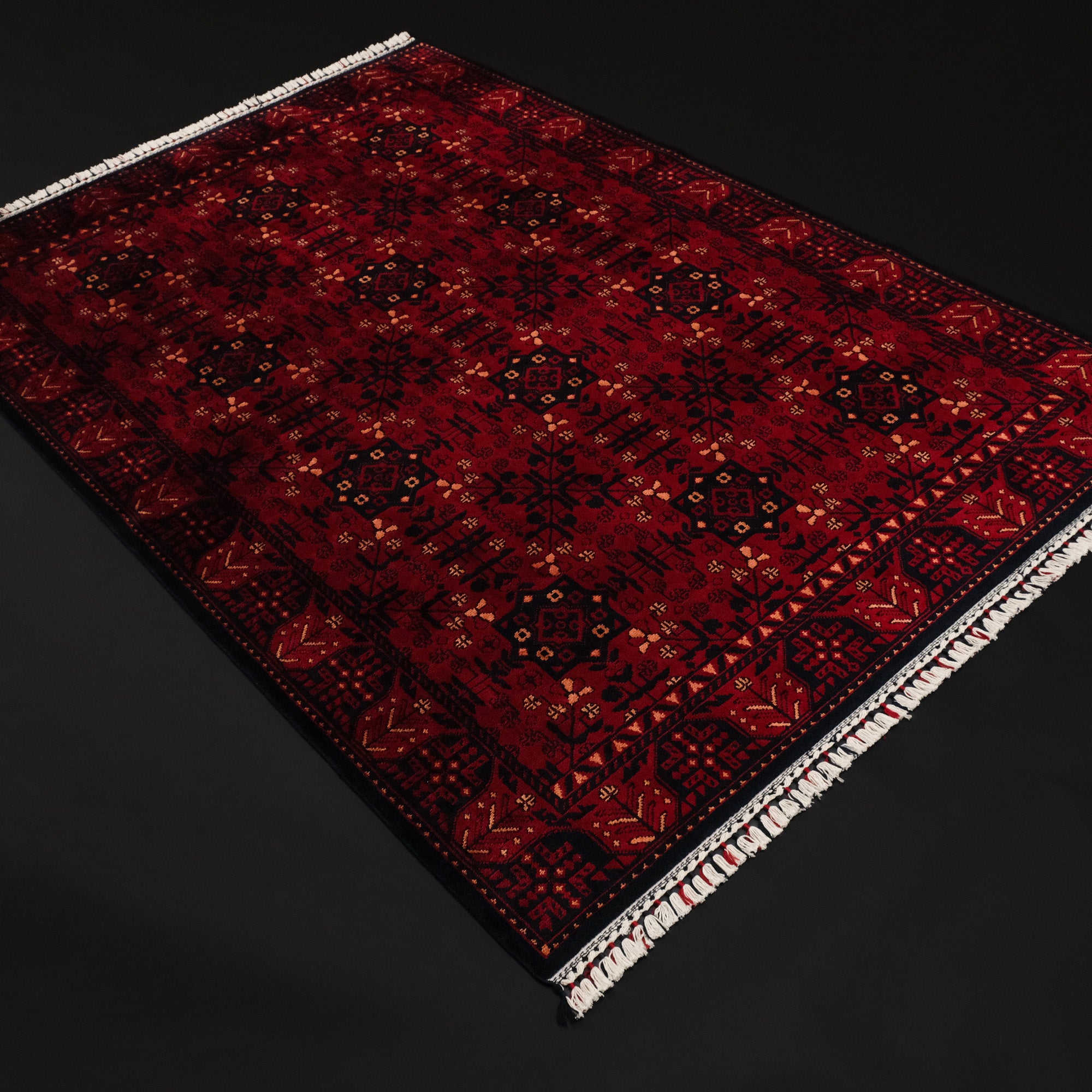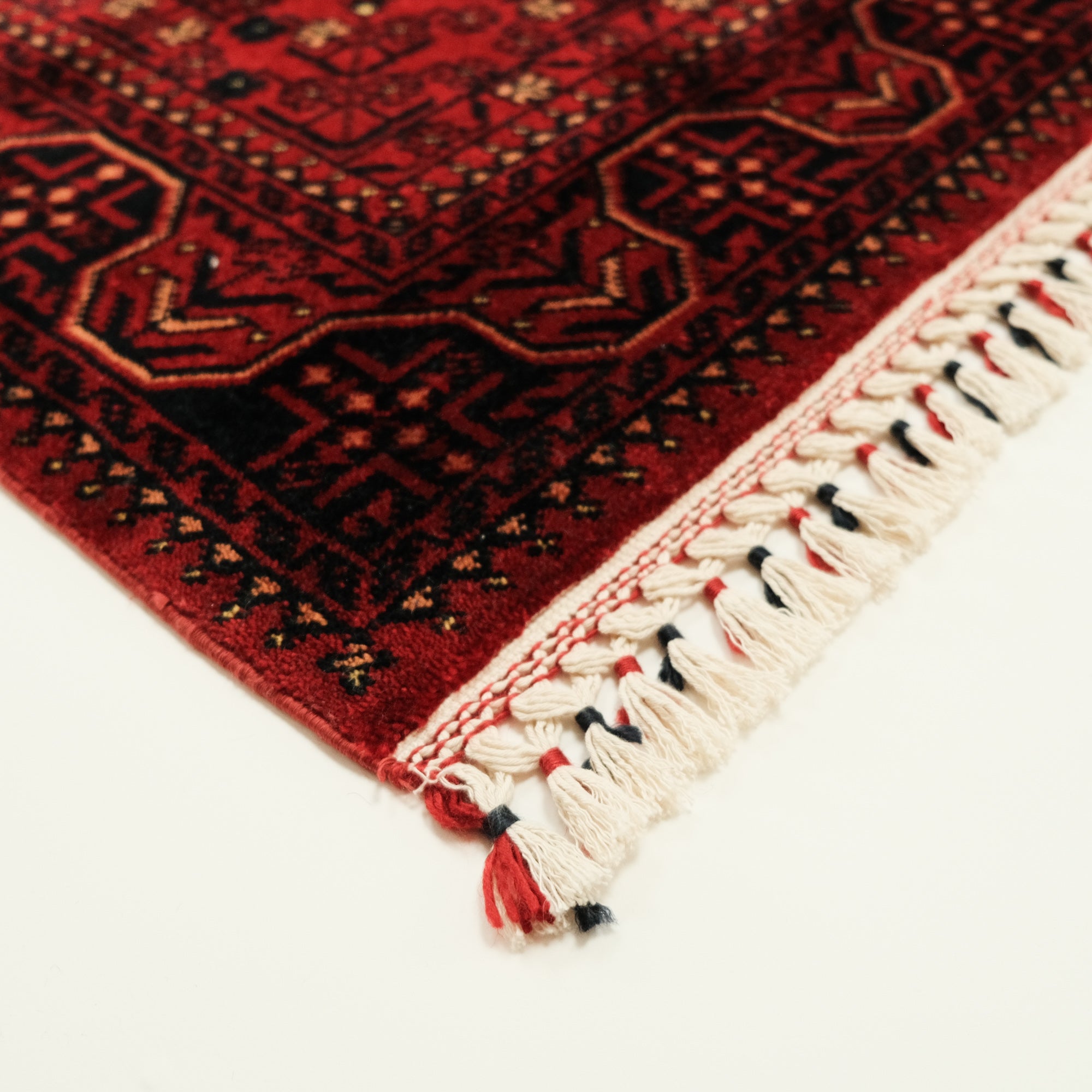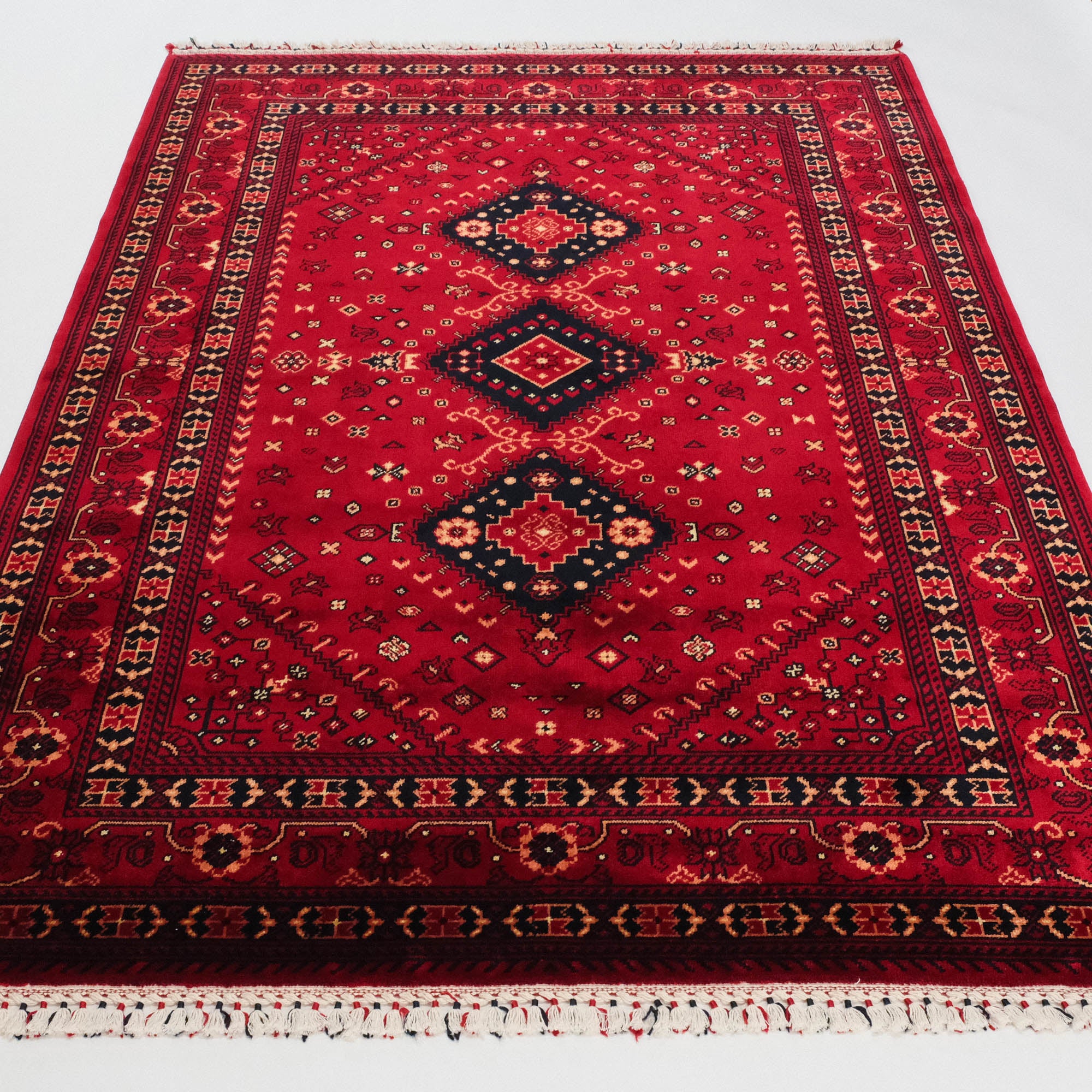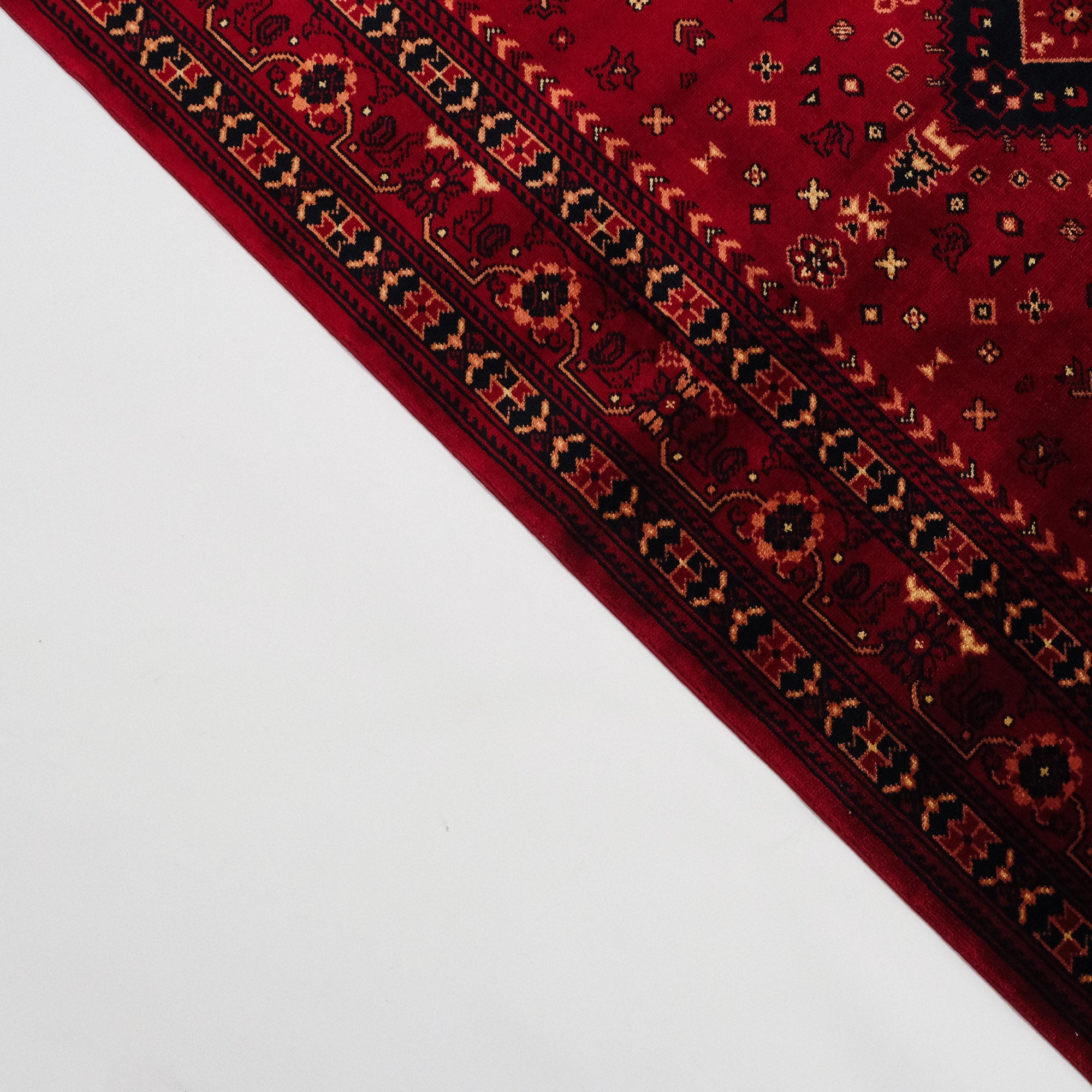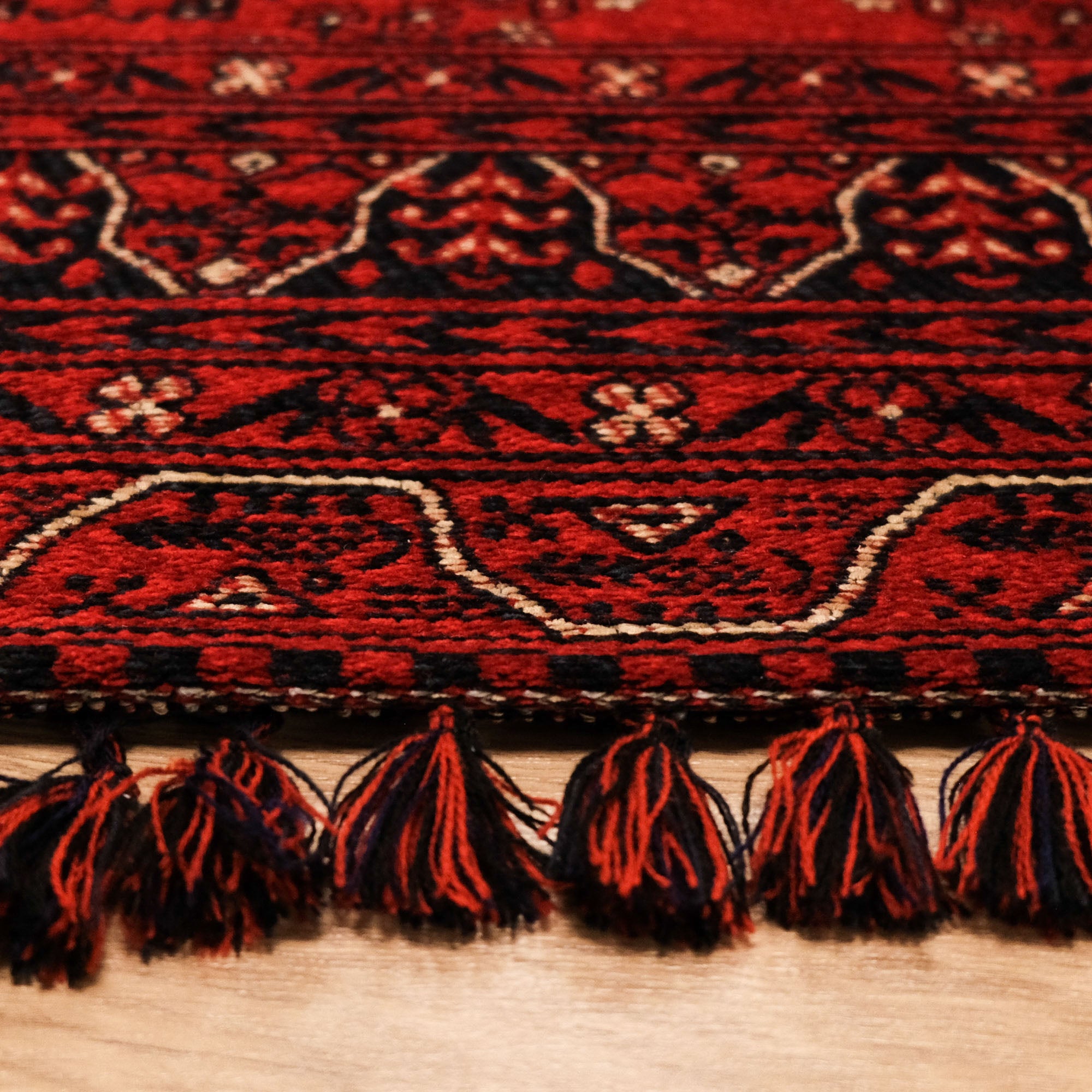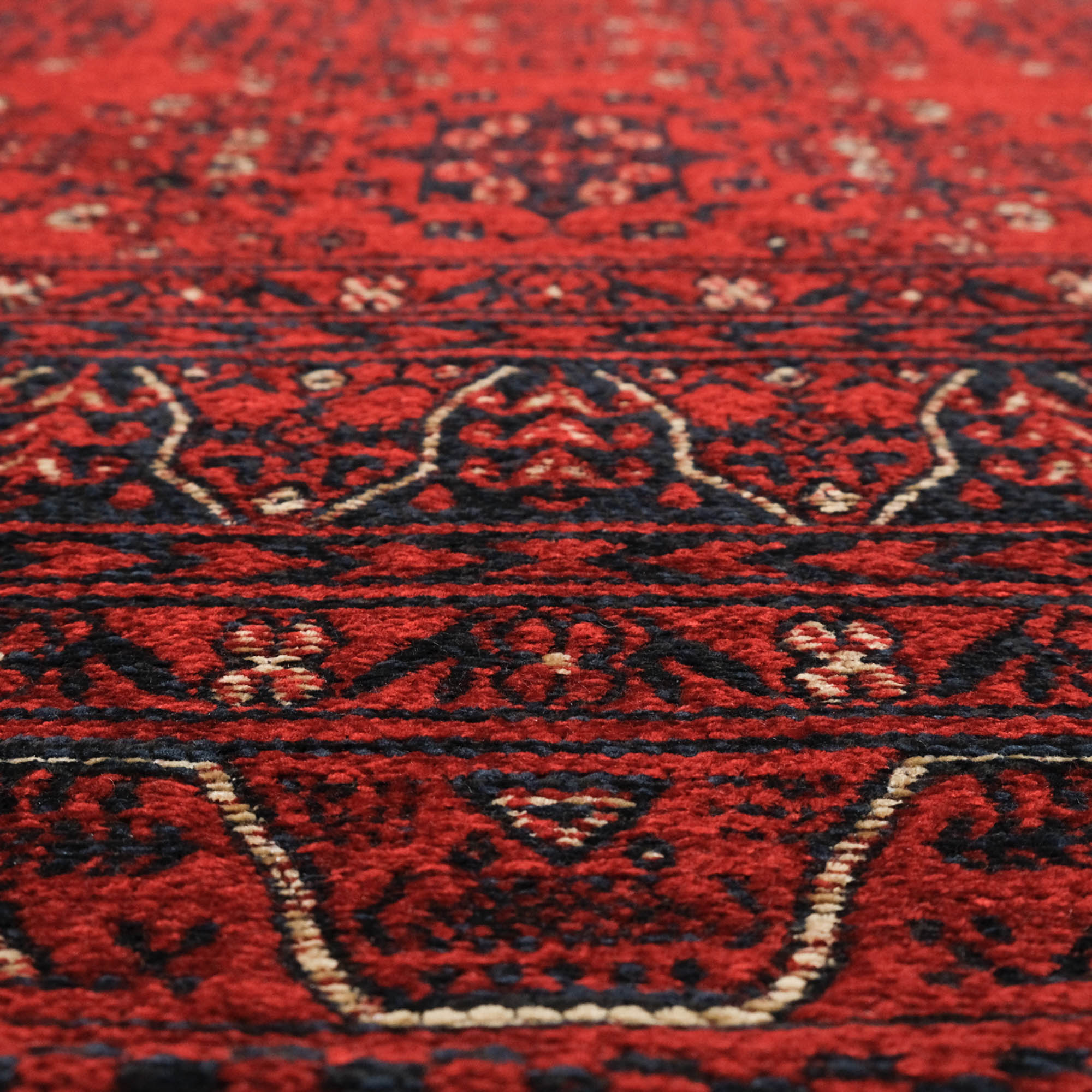Turkish Rugs
Turkish rugs stand out as a unique representative of the art of hand weaving, showcasing cultural richness and aesthetic value. Each Turkish area rug comes to life with meaningful motifs, precious natural materials, and high craftsmanship. This makes each antique Turkish rug a floor covering and a historical piece.
Bring the tradition of Turkish rugs into your living spaces with products in Halicizade’s Turkish rug collection.
What is a Turkish Rug?
A Turkish rug is a handcrafted product, usually woven from natural fibers (silk, wool, or cotton), incorporating traditional Turkish motifs and designs. The process of making a Turkish rug begins with the selection of materials, followed by processing, dyeing, and weaving. At each step, the experience and skill of the craftsmen directly impact the quality and durability of the rug.
Models made from natural fibers like silk, wool, or cotton ensure that Turkish rugs are environmentally friendly and safe for human health. For instance, wool Turkish rugs not only provide a warm and comfortable feel but are also durable and long-lasting.
Cotton Turkish rugs are light, breathable, and easy to use, making them suitable even in the summer. Natural silk threads' extraordinary softness and brightness make Silk Turkish rugs an elegant choice.
Turkish Rug Models
Turkish rug models encompass both traditional and modern designs, offering a wide variety. Designs of Turkish hand woven rugs are the result of a lengthy process, sometimes taking months or years. Antique Turkish rug models include traditional patterns and motifs from the Ottoman era.
Anatolian Shawl rug, one of the varieties of Turkish rugs, is a traditional rug model produced in many regions of Anatolia using locally obtained wool and natural dyes, with patterns varying regionally.
Turkish Anatolian rug designs showcase unique patterns and colors reflecting the cultures and arts of different ethnic groups. These rugs are essential for those wanting to create an authentic and extraordinary atmosphere.
Authentic Turkish rugs combine traditional Turkish rug weaving art with modern designs. Unlike ethnic designs, these models do not reflect specific cultural groups. Patchwork Turkish rug models are created by assembling different rug pieces, forming colorful and dynamic designs, often preferred in modern and contemporary spaces.
A vintage Turkish rug refers to older and usually well-preserved floorings that originate from Turkey. Vintage Turkish rugs carry cultural and historical significance, often representing the artistic traditions and craftsmanship of the region. Like contemporary Turkish rugs, vintage Turkish rugs are handwoven by skilled artisans. The weaving process involves traditional techniques that have been passed down through generations. These bohemian rugs are crafted from natural materials such as wool, cotton, or silk. The use of high-quality materials contributes to their durability and distinct feel. Traditional motifs, symbols, and color palettes unique to Turkish culture are common.
Striped Turkish rugs and Floral Turkish rugs stand out with elegant designs. Striped models are ideal for modern and minimalist spaces, while floral models are preferred by those seeking a romantic and classic atmosphere.
Turkish Oushak rug and Yagcibedir rug are renowned rug models produced in different regions of Turkey, known for their quality and patterns. Popular worldwide, these rugs serve as bridges between the past and the future in the world of Turkish Tribal rugs.
Kayseri rug is a type of Turkish carpet or rug traditionally handwoven in the city of Kayseri, located in central Turkey. Kayseri rugs are known for their intricate designs, vibrant colors, and fine knotting. The patterns often include geometric motifs, floral elements, and medallions. These rugs are typically made using high-quality wool and sometimes silk, which contributes to their durability and luxurious feel.
Hereke rug is another Turkish rug type of high-quality, handwoven carpet or rug that originates from the town of Hereke in Turkey. Hereke rugs are often made from silk, wool, or a combination of both. The use of silk in particular, adds a lustrous sheen to the rug and enhances its overall quality. Also, the number of knots per square inch is typically very high, contributing to the rugs' durability and fine texture.
In the realm of Turkish rugs, there are not only rugs but also kilim models. Turkish kilim is a model produced using the flat weaving technique, offering a sustainable option as it is made with natural materials and plant-based dyes. Due to their thinner and smaller size compared to rugs, Turkish kilim rugs are often preferred in summer or on balconies. You can easily decide on their usage by learning more detailed information about Turkish rug models.
Features of Turkish Rugs
The features of Turkish rugs can be listed as pattern richness, quality materials, and being handwoven. Considering their aesthetic appearance and functionality, the general characteristics of frequently preferred Turkish rugs include:
- Turkish rugs are known for their unique and meaningful patterns.
- High-quality materials such as silk, wool, and cotton are used in their production.
- Each rug is meticulously woven by skilled artists.
- Thanks to the threads used, Turkish rugs are long-lasting.
- They have natural and permanent colors.
- Due to the structure of their fibers, they have the capacity to absorb moisture.
- Their insulation property keeps the space warm.
Considering these features, Turkish rugs offer many advantages in terms of both pattern and color diversity. Taking these characteristics into account when deciding on usage will not only simplify the process but also ensure satisfaction with the purchased product.
Where are Turkish Rugs Used?
Turkish rugs are widely used both in Turkey and globally, finding a place in various settings such as homes, offices, and public spaces. In homes, Turkish rugs are commonly found in living rooms, bedrooms, and hallways. Their rich colors and patterns easily complement almost all interior designs.
Turkish rugs are chosen in offices and workplaces to create a prestigious and serious atmosphere. In such spaces, neutral colors and simple patterns are selected for a sophisticated and formal look. Many hotels and restaurants also use Turkish red rugs to reflect local culture and create a pleasant atmosphere.
Public spaces and religious places also frequently feature Turkish rugs. In mosques, these rugs serve the congregation, providing a comfortable space for worship. Additionally, museums and cultural centers showcase traditional Turkish rugs to exhibit Turkey's rich history and artistic heritage.
Considering the characteristics of Turkish rugs, they are not just floor coverings but are also considered art pieces in the spaces where they are used. To learn about the points to consider when placing a work of art in your living space, continue scrolling down the page.
What to Consider When Choosing a Turkish Rug?
Factors such as material quality, weaving technique, pattern, and color should be considered when selecting a Turkish rug. Points that will assist in the decision-making process are as follows:
- Pay attention to the materials used in making the rug. Silk, wool, and cotton are quality options.
- Consider the weaving technique if you are looking for an original Turkish rug. Turkish rugs are produced in the form of hand weaving.
- Keep in mind that the value of handwoven rugs is higher than machine-woven ones.
- Since the patterns of Turkish rugs are rich, ensure that they are clear, distinct, and vibrant.
- Confirm its authenticity by paying attention to the region where it was produced.
- Ensure that the texture of the rug is soft and dense.
- If possible, request a certificate or document confirming the authenticity of the rug.
- Be informed about how to care for and clean the rug.
- By considering these criteria when choosing a Turkish rug, you can easily acquire a piece that adds value to your living spaces.
What are the Prices of Turkish rugs?
The main factors determining Turkish rug price range include the size of the rug, the type of yarn used, and the weaving technique. Small and medium-sized rugs are generally more affordable. Large and custom-sized rugs, on the other hand, come with higher price tags. In addition to the size of the rug, its shape and design also influence the prices.
The type of yarn used also plays a decisive role in the price. Rugs made from high-quality and natural yarns such as natural wool, silk, or cotton are more expensive than those made from synthetic materials.
The weaving techniques also affect the sale options for Turkish rugs. Handmade Turkish rugs and kilims are more expensive than machine-produced ones. As Turkish hand knotted rugs require more time and effort, they are considered more valuable. Therefore, special attention must be paid to their care and cleaning.
How to Clean a Turkish rug?
Daily maintenance of Turkish rugs, necessary for removing dust and dirt, can be achieved with regular vacuuming using a low-power, soft-headed vacuum cleaner. A low-power and soft-headed vacuum cleaner should be preferred to avoid damaging the fibers during the vacuuming process.
Additionally, rugs should be regularly aired out and protected from moisture. Ventilation helps the rug get rid of moisture and acquire a fresh scent. Since damp and humid environments can cause rugs to wear out more quickly, rugs should be stored in a dry and airy environment.
Changing their positions from time to time is an effective maintenance method to ensure that rugs wear evenly. This way, a specific area of the rug won't wear out more than others, extending the rug's lifespan.
To preserve the colors and texture of rugs, it's crucial to protect them from direct sunlight. Exposure to sunlight can cause the colors of rugs to fade. In case of stains, cleaning the Turkish rug should be done quickly and effectively with products suitable for the type of stain.
Professional Turkish rug washing services should be sought at least twice a year or when needed for deep cleaning. These services clean rugs thoroughly, preserving their freshness and vibrancy. Professional washing services, which do not harm the texture, colors, and fibers, ensure deep cleaning for Turkish rug models. Following these cleaning and maintenance routines helps Turkish rugs maintain their beauty and quality for years.
Turkish Rug Brands
Among Turkish rug brands, Halicizade stands out, offering unique and quality rugs with its long years of experience and expertise. If you are looking for modern versions of traditional Turkish rug designs or if you are an art enthusiast seeking original, aesthetic, and high-quality rugs, we recommend exploring the extensive collection of Halicizade. This way, you can easily find rugs that will beautify your spaces and meet your needs with just a click.
Frequently Asked Questions About Turkish Rugs
Halicizade rug experts have answered frequently asked questions about Turkish rugs.
Why is a Turkish rug Valuable?
A Turkish rug is valuable due to its unique patterns crafted with hand labor, high-quality materials, and historical texture.
How Should a Turkish Rug be Preserved?
Regular and careful cleaning, application of protective methods, and protection from direct sunlight extend the life of a Turkish rug.
In Which Rooms Can Turkish Rugs Be Used?
Turkish rugs can be used in many areas, including the living room, bedroom, entrance, and salon, for aesthetic and comfort reasons.






